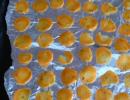Symptoms of jaundice in newborns, treatment methods
Newborn jaundice is a fairly common occurrence and often causes concern for mothers. This process is based on increased formation of bilirubin (hyperbilirubinemia) in the blood of the newborn. Exceeding its permissible values causes the skin and mucous membranes to turn yellow.
This condition can be caused by various reasons, determining the physiological or pathological course of the process.
The latter requires intensive treatment, and severe forms of jaundice often leave behind consequences.
It is important to remember that jaundice in a premature newborn appears in almost 100% of cases and lasts longer. This is due to the immaturity of the premature baby and the insufficient functioning of its liver.
Physiological jaundice
This condition does not cause concern for the child’s health and passes without consequences. Physiological jaundice appears in most newborns by the end of the 2nd or 3rd day after birth. As a rule, it goes away without a trace by 3 weeks of life.
Development mechanism
In utero, fetal hemoglobin circulates in the fetal blood. After birth, the baby’s red blood cells, which carry such hemoglobin, are destroyed. This causes an increase in bilirubin levels due to the indirect fraction (not bound to blood plasma proteins). Normally, after birth, the bilirubin level does not exceed 50 µmol/l. By day 7 it can reach 200 µmol/l, and after 2 weeks its level decreases to 60 µmol/l. This is explained by the fact that from about 10 days, indirect bilirubin binds to blood proteins. Bilirubin becomes direct (bound) and excreted from the body. Jaundice in a newborn gradually disappears.
Clinical picture
Physiological jaundice in newborns is manifested by yellow discoloration of the skin, starting from the head. The higher the level of bilirubin in the blood, the richer the color. And the process begins to spread from the head to the lower extremities. The mucous membranes in the oral cavity and sclera are also stained. The urine darkens slightly, and the stool remains green for a long time. The general condition of the child is not affected.

Diagnosis and treatment
The level of bilirubin in the blood is monitored once a week in the absence of negative clinical dynamics. Physiological jaundice in a newborn does not require special treatment. It is enough to provide the child with adequate breastfeeding, which improves the excretion of bilirubin. You should also try to stay in the sun more, avoiding direct sunlight.
If the bilirubin level exceeds 250 µmol/l, then mandatory hospitalization of the child in a hospital is necessary. In this case, additional examination and appropriate treatment are prescribed.
Arias hyperbilirubinemia (breast milk jaundice)
Such jaundice of newborns is also physiological and occurs during breastfeeding. It develops as a result of the intake of large amounts of fatty acids through breast milk. They slow down the process of binding bilirubin in the child’s blood and its removal from the body.

Therefore, there is an excessive accumulation of indirect bilirubin fraction, which can reach 300 µmol/l. This peak occurs at 21 days of life. Then the bilirubin level gradually decreases.
Clinically, Arias jaundice appears in a newborn 7–10 days after birth. It goes away without a trace by the 3rd month of life or can accompany the entire period of breastfeeding. It does not affect the development of the child in any way and does not cause any consequences.
There is no need to interrupt breastfeeding. Does not require special treatment.
Pathological jaundice
This is a large group of diseases that appear as a result of pathological processes in the body of a newborn child. Pathological type jaundice in a newborn requires mandatory therapy and continuous monitoring of the child. Treatment is often carried out in the intensive care unit and resuscitation department.

Pathological jaundice can be caused by the following reasons:
- Blood group or Rh factor conflict between mother and fetus. This process is the cause of the development of hemolytic disease in a newborn. It can occur in icteric, anemic or edematous form. Jaundice in a newborn with HDN appears in the first hours of life. In severe cases of the disease, the child is already born with visible jaundice.
- Genetic diseases leading to the destruction of red blood cells and the accumulation of bilirubin. These include: sickle cell anemia, microspherocytosis, infantile pycnocytosis, thalassemia.
- Viral and bacterial infections in the fetus can also cause parenchymal jaundice. It can be caused by cytomegalovirus, herpes infection, rubella, toxoplasmosis, Epstein-Barr virus, hepatitis B and C.
- Impaired outflow of bile from the liver due to atresia of the bile ducts, obstruction by a cystic formation, pathology of the development of the pancreas. In this case, mechanical jaundice develops in the newborn.
- Gilbert's syndrome is a hereditary disease in which a deficiency of enzymes that bind bilirubin is determined. Such jaundice is common in newborns and requires lifelong therapy and observation by a gastroenterologist.
- Hormonal disorders.
- Extensive hematomas, cephalohematomas in a newborn.

Symptoms of pathological jaundice
Manifestations of the disease depend on the cause and severity of the condition. Jaundice in most newborns is manifested by the following symptoms:
- Yellow discoloration of the skin and mucous membranes immediately after birth. The intensity increases over several hours, involving the white membrane of the eyes in the process. Subsequently, the color may acquire a lemon, greenish tint or remain bright yellow.
- If jaundice occurs in a severe form in a newborn, then there is a deterioration in the general condition, suppression of reflexes, and respiratory disorders. The skin acquires a grayish tint on a yellow background.
- Urine darkens and stool becomes discolored.
- With genetically determined jaundice, bruises may appear on the child’s body. In case of a viral or bacterial process - a pinpoint (petechial) rash.
- Palpation reveals an enlarged spleen and liver.
- Increase in abdominal volume.
Pathological jaundice in a premature newborn is much more severe than in full-term infants.

The greatest danger is kernicterus. This pathology develops at lightning speed. Bilirubin levels reach critical levels in a short time and have a toxic effect on the brain. This is manifested by depression of the general condition, extinction of reflexes, respiratory and metabolic disorders. Convulsive syndrome and meningeal symptoms appear.
Kernicterus in a newborn is dangerous with serious consequences for later life. May be fatal.
Diagnostic methods
Jaundice of newborns is diagnosed using the following laboratory and instrumental examinations:

Treatment
Pathological jaundice is treated in newborns using conservative methods. Surgical treatment is indicated only for obstructive jaundice.
Conservative treatment:

For stagnation of bile, ursofalk is used. The dosage is determined based on 1 kg of body weight.
Jaundice in newborns in most cases is physiological and does not pose a danger. Discharge from the maternity hospital is carried out as planned under the supervision of a local pediatrician. If jaundice persists in a newborn for a long time, then it is necessary to consult a specialist for a more detailed examination and to exclude pathological jaundice.

Especially if the newborn’s condition has worsened, sluggish sucking has appeared and poor weight gain is noted. Timely diagnosis of pathologies and treatment reduce the risk of adverse consequences.






